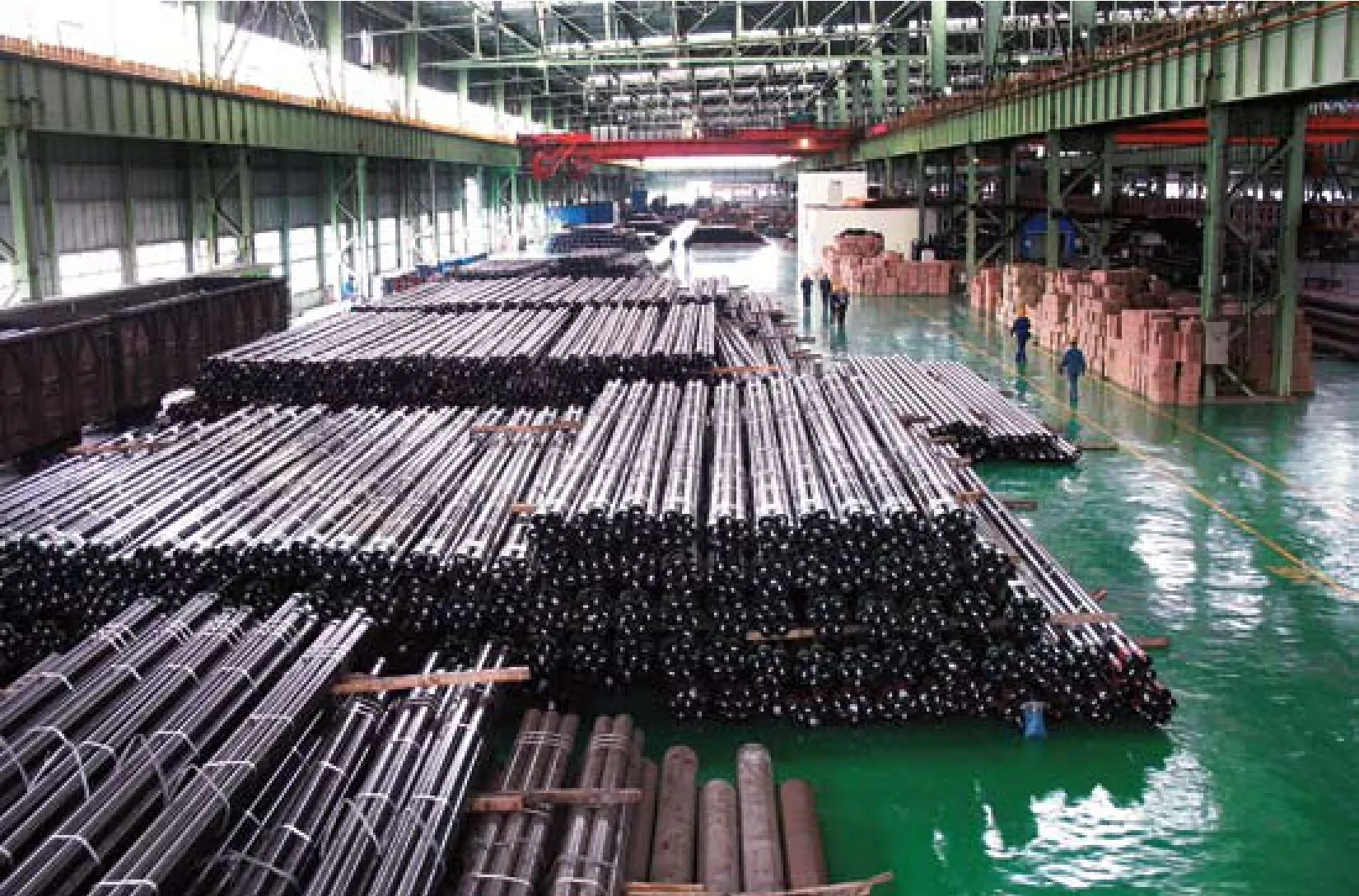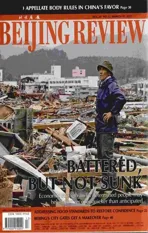A Win for the Home Team
2011-12-06ByLANXINZHEN
By LAN XINZHEN
A WTO decision rules that numerous U.S.anti-dumping and countervailing duty investigations against China were unwarranted
The WTO Appellate Body on March 11 issued its decision in a challenge brought by the Chinese Government to several anti-dumping and countervailing duty investigations conducted by the United States. The decision confirms antidumping and countervailing duty orders by the United States on imports of new pneumatic off-road tires, circular welded pipes,light-walled rectangular pipes and tube and laminated woven sacks from China were inconsistent with WTO rules.
With the decision made, the anti-dumping and countervailing duty investigation by the United States against China, which has lasted five years, must be closed. Since some other countries have followed the United States in carrying out anti-dumping and countervailing duty investigations against China,the WTO decision may act as a deterrent against such action.
On March 12, Li Chenggang, Director of the Department of Treaty and Law of the Ministry of Commerce (MOFCOM), said China welcomed the ruling and hailed it as a victory against further trade disputes. “China demands the United States correct its unfair use of trade measures and ensure fair competition for Chinese companies,” Li said.
The case
From July 2007 to September 2008, the United States imposed anti-dumping and countervailing duty measures on four product categories imported from China: new pneumatic off-road tires, circular welded pipes,light-walled rectangular pipes and tube and laminated woven sacks. Overusing these investigations has brought serious difficulties to the development of related Chinese industries. To eliminate discriminative trade protectionism measures, China challenged the U.S. measures in the dispute settlement body of the WTO on September 19, 2008.
According to information from MOFCOM, after China brought WTO action against the United States, consultation procedures started, but achieved no results. On October 9, 2008, China requested a panel be established, but the two countries were unable to reach an agreement on the members of the panel. Finally three experts selected by the WTO director-general formed the panel on March 4, 2009.
The biggest argument surrounding the case is that the United States viewed China as a non-market economy and that Chinese state-owned enterprises and banks are public bodies instead of independent business entities. The allegations included that when applying for land use rights, these production enterprises pay prices lower than the average market prices, hence obtaining disguised subsidies. The United States holds that products from China received subsidies during production, so it imposes high countervailing duties upon Chinese products while collecting anti-dumping duties.
On October 22 last year, the WTO panel issued a ruling. Although the WTO’s dispute settlement body found that the U.S.Department of Commerce had acted inconsistently with WTO rules on five elements of the case, it rejected most of China’s contentions. China appealed the WTO panel ruling later on December 1.
The decision by the appellate body of the WTO reversed key points of the earlier WTO panel decision: the WTO appellate body ruled that the U.S. Department of Commerce wrongfully applied laws to label Chinese stateowned enterprises as “public bodies” and raw materials provided by such enterprises as“governmental financial support,” and that the practices of the U.S. side were unfounded and inconsistent with WTO agreements.
The decision by the appellate body of the WTO also supported China’s claims to“double remedies,” saying that the United States is inconsistent with WTO rules to apply countervailing duties to Chinese firms on the basis of a non-market economy methodology while imposing anti-dumping duties on Chinese products.
The appellate body recommended the dispute settlement body of the WTO request the United States to bring its measures into line with the Agreement on Subsidies and Countervailing Measures.
Unlikely to improve
Industrial insiders think the WTO decision will not alleviate trade protectionist actions against China.

DRESSING UP THE WORLD:Two ladies browseChinese textiles at the 11th China Textile and Apparel Trade Fair held in New York City in July 2010. The fair is the biggest textile procurement fair in North America
According to the MOFCOM, early in 1984 the U.S. Department of Commerce decided that anti-dumping and countervailing measures should not be adopted simultaneously. In 1986, the U.S. Court of Appeal also confirmed this principle. However, since 2007, the U.S. Department of Commerce has departed from its usual practice and adopted simultaneous anti-dumping and countervailing duty measures against products from China.
Such volatile behaviors have called forth not only complaints from the business circle,but also some official opposition from the United States. On September 18, 2009, the United States Court of International Trade issued a ruling that said it is unreasonable for the U.S. Department of Commerce to,regarding China as a non-market economy,impose both anti-dumping and countervailing duties based on a surrogate country system.
On April 27, 2010, the U.S. Department of Commerce submitted to the United States Court of International Trade the final results of its redetermination on the case of off-road tires,refusing to either stop applying countervailing duty laws to China or treat it as a market economy for the purposes of anti-dumping law.On August 4, 2010, the United States Court of International Trade handed down a judgment,saying it is illegal to impose countervailing duties upon non-market economy countries and directing the Department of Commerce to cease simultaneous application of antidumping and countervailing duties against the same imports from China.
However, the U.S. Department of Commerce didn’t change its discriminative behaviors against China, launching anti-dumping and countervailing investigations upon Chinese products, like seamless tubes and coated paper.
Li says during the past five years, China tried to address the problem with the U.S.Government several times. However, the U.S.Department of Commerce refused to correct its unfair double remedies regardless of the opposition from Chinese enterprises and U.S.importers as well as U.S. court judgments, all of which put a heavy burden on China’s export enterprises. In addition to this case, the United States has initiated more than 20 others involving anti-dumping and countervailing.
According to MOFCOM estimates, in 2015 China-U.S. bilateral trade will be valued at $500 billion, $200 billion of which will be exports by the United States to China. Statistics from the General Administration of Customs of China show that in 2010 China-U.S. bilateral trade stood at $102.3 billion, which means within five years China-U.S. trade volume will grow by nearly one third, and China’s imports from the United States will double.
In contrast to such optimistic prospects,the United States revised its trade facilitation policy on December 9, 2010, extending preferential trade policies to 164 countries in three categories—China is excluded from the 164 countries.
Liu Xu, Director of the International Trade Office of the Institute of Foreign Economy affiliated to the National Development and Reform Commission, says as long as China’s market economy status is not recognized by the United States, the latter can draw conclusions about dumping and then impose anti-dumping duties with the authorization of the WTO.Moreover, for the sluggish economy and high unemployment rate in the United States in recent years, U.S. interest groups competing against Chinese products are targeting “madein-China” items. If this background is not fundamentally changed, trade frictions between China and the United States and their battle on the platform of the WTO will continue.
Lessons learned?
As the first and second largest economies in the world, the United States and China are mutually dependent during the process of economic globalization. The United States should confirm China’s status as a market economy as soon as possible and relax various non-economic restrictions on the products exported by China.
China entered the WTO in 2001, and WTO rules and China’s accession protocol are the obligatory rules that the Chinese Government must obey. Since the rules were formulated by Western countries, China has been in a weak position, facing frequent accusations by the West.
At present, China-U.S. trade has come to the global forefront. With more Chinese industries engaging in global trade, the trade frictions between China and the United States have extended from sectors such as furniture and textiles to iron and steel, color TV, chemical raw materials, farm produce and intellectual property rights, transferring from primary products to manufactured goods and hi-tech products.
Therefore, to avoid trade frictions, China must, besides better understanding international rules, make changes to its rules and practices that are inconsistent with international rules and make sure its voice is heard as new international rules and regulations are formulated in the future. ■

GLOBAL SUPPLIER:Oil and natural gas pipelines and other high value-added products from Hengyang Valin Steel Tube Co. Ltd.are sold in more than 40 countries and regions.The company is the biggest producer of small-diameter seamless pipes in the world
